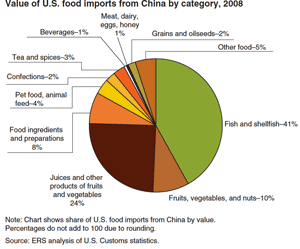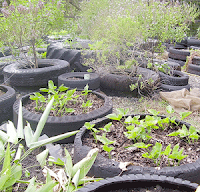WEEK #10 CULINARY ARTS CLASS:
Another great class with Chef Fredericks where we made pork cutlets, homemade applesauce, wilted swiss chard with pancetta and potatoes au grain. Online, I discovered Chef Fredericks was a Dinner Chef at the James Beard Foundation in 2002, a great honor. Chefs are invited to cook a five course meal, plus three to five hors d'oeuvres, for 74 guests at the Foundation. You can take an interactive tour of the James Beard Foundation kitchen here. I dig the wallpaper! Also, take a look at their recipes, the Tawa Baingan (eggplant and potato layers with coconut sauce) looks especially good.
Chef Fredericks paired his James Beard Foundation menu with Brewer-Clifton wines which are from the Santa Rita hills in Santa Barbara County. I haven't had the chance to sample them, but I know that one of the two partners, Steve Clifton, owns the local winery Palmina which makes nice Italian varietals.
What is a sautoir? A deep, wide, straight-sided frying pan used in classic French cooking for braising, pan frying and sautéing. It is particularly useful in the kitchen because it can go from stove top to oven. Buy one with a thick bottom, long handle and tight fitting lid. Like your Dutch oven, you will end up loving this kitchen tool!
NOTES ON COOKING OIL:
Use a high-smoke point oil (best over 420ºF) for deep frying and pan frying. At Culinary school, we use olive oil pomace which is made from the pulp of the olive oil after the first press for extra virgin olive oil. It has less flavor, but a higher smoke point.
Here's a table of common cooking fats and their smoke points:
*Personally, I avoid canola oil in all my cooking. Have you ever heard of a canola plant? No--because there is no such thing. Canola is made from hybridized rapeseed plants which normally contain erucic acid. Most canola oil is processed using a petroleum product called hexane.
One of the many things I've learned from Chef Fredericks is the importance of contrasting flavors. We made applesauce with apple cider vinegar--just enough to give a bright zing to complement the sweetness of the apples and brown sugar. It's those little nuances that make the difference between a good cook and a real chef.
EASY HOMEMADE CHUNKY APPLESAUCE:
4 large tart apples, like Pippin or Granny Smith
1/4 cup apple cider vinegar
1 1/2 cup water, approximate
1 cup brown sugar, loosely packed
pinch cinnamon
Peel the apples, remove the core and chop into a small dice--about 1/4" cubes. Place in a saucepan with the vinegar and enough water to fill the pot just below the level of the top of the apples. Cook for 45 minutes to 1 hour on the stove over low heat, stirring occasionally, until the apple is soft but not mushy. The water should cook away, leaving a thick sauce--add more water during the cooking if needed, or increase the heat to evaporate some of the water if the sauce is too watery. Add the sugar and cinnamon to taste. Stir the sauce just until some of the apple is broken up but chunks still remain. Serve with the pork cutlets above.
Why did I title this post "The Perils and Pleasures Of Pork"? I taste what we create in Culinary class to learn how to be a better cook, but my avowed vegetarianism is threatened by pork products. I took one nibble of the pork cutlet and ended up eating both of them. The crispy pancetta in the wilted swiss chard was irresistable. I fell off the vegetarian wagon yesterday, but I'm back on today, making buckwheat blueberry pancakes for breakfast and loading up at Lane Farms with organic veggies.
Another great class with Chef Fredericks where we made pork cutlets, homemade applesauce, wilted swiss chard with pancetta and potatoes au grain. Online, I discovered Chef Fredericks was a Dinner Chef at the James Beard Foundation in 2002, a great honor. Chefs are invited to cook a five course meal, plus three to five hors d'oeuvres, for 74 guests at the Foundation. You can take an interactive tour of the James Beard Foundation kitchen here. I dig the wallpaper! Also, take a look at their recipes, the Tawa Baingan (eggplant and potato layers with coconut sauce) looks especially good.
Chef Fredericks paired his James Beard Foundation menu with Brewer-Clifton wines which are from the Santa Rita hills in Santa Barbara County. I haven't had the chance to sample them, but I know that one of the two partners, Steve Clifton, owns the local winery Palmina which makes nice Italian varietals.
What is a sautoir? A deep, wide, straight-sided frying pan used in classic French cooking for braising, pan frying and sautéing. It is particularly useful in the kitchen because it can go from stove top to oven. Buy one with a thick bottom, long handle and tight fitting lid. Like your Dutch oven, you will end up loving this kitchen tool!
NOTES ON COOKING OIL:
Use a high-smoke point oil (best over 420ºF) for deep frying and pan frying. At Culinary school, we use olive oil pomace which is made from the pulp of the olive oil after the first press for extra virgin olive oil. It has less flavor, but a higher smoke point.
Here's a table of common cooking fats and their smoke points:
| Butter | 260ºF |
| Refined safflower oil | 320ºF |
| Clarified butter (or ghee) | 335-380ºF |
| Pork lard | 370ºF |
| Walnut oil | 350-400ºF |
| Extra virgin olive oil | 350-410ºF |
| Margarine | 410-430ºF |
| Vegetable oil | 410ºF |
| Pomace oil | 410-440ºF |
| Canola oil* | 430-445ºF |
| Refined sunflower oil | 460ºF |
| Corn oil | 450ºF |
| Cottonseed oil | 450ºF |
| Peanut oil | 450ºF |
| Refined soybean oil | 450ºF |
| Soybean oil | 495ºF |
One of the many things I've learned from Chef Fredericks is the importance of contrasting flavors. We made applesauce with apple cider vinegar--just enough to give a bright zing to complement the sweetness of the apples and brown sugar. It's those little nuances that make the difference between a good cook and a real chef.
EASY HOMEMADE CHUNKY APPLESAUCE:
4 large tart apples, like Pippin or Granny Smith
1/4 cup apple cider vinegar
1 1/2 cup water, approximate
1 cup brown sugar, loosely packed
pinch cinnamon
Peel the apples, remove the core and chop into a small dice--about 1/4" cubes. Place in a saucepan with the vinegar and enough water to fill the pot just below the level of the top of the apples. Cook for 45 minutes to 1 hour on the stove over low heat, stirring occasionally, until the apple is soft but not mushy. The water should cook away, leaving a thick sauce--add more water during the cooking if needed, or increase the heat to evaporate some of the water if the sauce is too watery. Add the sugar and cinnamon to taste. Stir the sauce just until some of the apple is broken up but chunks still remain. Serve with the pork cutlets above.
Why did I title this post "The Perils and Pleasures Of Pork"? I taste what we create in Culinary class to learn how to be a better cook, but my avowed vegetarianism is threatened by pork products. I took one nibble of the pork cutlet and ended up eating both of them. The crispy pancetta in the wilted swiss chard was irresistable. I fell off the vegetarian wagon yesterday, but I'm back on today, making buckwheat blueberry pancakes for breakfast and loading up at Lane Farms with organic veggies.
This recipe is from my childhood:
Crispy Panko-Crusted Pork Cutlet:
2 pork cutlets
1 1/2 cup flour
1 egg
1 cup Panko bread crumbs
2 cups, approximate, oil for frying*
salt and pepper
In a sautoir or deep frying pan, pour in oil to a depth of 2" and heat over medium heat. The oil should be hot, but not smoke. To set up your standard breading procedure, you will need 3 wide, shallow bowls. The flour goes in the first, the egg in a second (whisk the yolk and whites together thoroughly with a fork), and the Panko in the third bowl. Season the cutlets with salt and pepper on both sides, dredge in the flour, then dip in the egg, then in the Panko. Using long tongs, carefully put the cutlets in the oil. They will sink to the bottom. The oil should be bubbling around the cutlets. After a few minutes, the cutlets will rise to the surface. Turn with the tongs and continue cooking until golden brown. Drain on two layers of paper towel, then slice and serve.
Crispy Panko-Crusted Pork Cutlet:
2 pork cutlets
1 1/2 cup flour
1 egg
1 cup Panko bread crumbs
2 cups, approximate, oil for frying*
salt and pepper
In a sautoir or deep frying pan, pour in oil to a depth of 2" and heat over medium heat. The oil should be hot, but not smoke. To set up your standard breading procedure, you will need 3 wide, shallow bowls. The flour goes in the first, the egg in a second (whisk the yolk and whites together thoroughly with a fork), and the Panko in the third bowl. Season the cutlets with salt and pepper on both sides, dredge in the flour, then dip in the egg, then in the Panko. Using long tongs, carefully put the cutlets in the oil. They will sink to the bottom. The oil should be bubbling around the cutlets. After a few minutes, the cutlets will rise to the surface. Turn with the tongs and continue cooking until golden brown. Drain on two layers of paper towel, then slice and serve.















